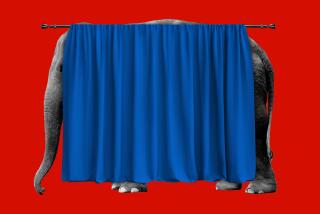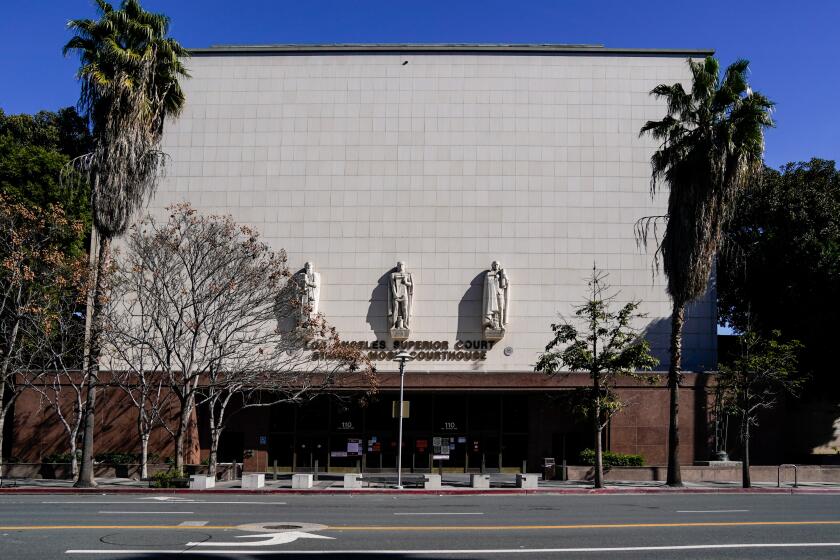L.A.’s flawed redistricting process
Under the old-school method of redrawing political boundaries, elected officials would get together in a back room to horse-trade, bicker and dicker, then meet again in the open to adopt their new maps as a done deal. If you didn’t like what they came up with, you had to sue — and you could win, but only if you could show that the maps discriminated against a historically underrepresented group. This is still the way it’s done in most jurisdictions in the country, and was the way the Los Angeles City Council did things until 2000.
Under the reform method adopted for this year’s state Assembly, Senate, Board of Equalization and congressional redistricting, a somewhat randomly selected citizens commission conducts numerous hearings, considers public testimony, consults with legal experts, demonstrates how well it has or has not complied with legal and voter-designated criteria, and arrives at a final version of district maps. The reform method needs some tweaking by the next time it’s used — after the decennial census in 2020 — but generally it’s a step forward for California.
And then there’s the City Council’s current hybrid method, dictated by a charter adopted by voters in 1999. It is almost perfect — perfect, that is, in the sense that it is almost perfectly devoid of redeeming qualities.
Under this system, a redistricting commission is selected by the city’s incumbent elected officials. And of course those 15 City Council members, the mayor, the controller and the city attorney will swear up and down that they made their selections based on the integrity and independence of their appointees, and certainly not based on their faith that their designees will do the bidding of the appointing officials.
Commissioners meet numerous times throughout the city in full public view — except for the many times that they meet in cliques behind closed doors, receiving private instructions from emissaries sent from council offices. They hold exhaustive hearings in which everyone has an equal chance to speak — except for incumbent office-holders, who are favored with the opportunity to make their comments first. Speaker cards are often shuffled to ensure that particular constituent comments are heard early and that others come only after a wait of up to five hours.
The City of Los Angeles Redistricting Commission’s process culminates Saturday, when the panel — which in fairness includes many well-meaning members who believe the process can work — releases what is for all practical purposes a final map. And because this map was drawn up independently (insert air quotes here) without any direction (wink, wink) from the City Council, the council will be merely accepting the commission’s hard work (cough) when it approves the map in a final vote sometime in March.
Who really cares whether Koreatown is linked on City Council maps with Thai Town, whether Watts is paired with the distant harbor or the equally distant Staples Center, whether the residents of Westchester who live under the flight path of Los Angeles International Airport share a district with LAX or not?
We all should, but not necessarily for the reasons that have so many residents up in arms. The downfall of the Los Angeles redistricting process is not that it is laden with politics. Drawing district lines, even if it were done by a computer programmed by apolitical technocrats, is an inherently political process. Who will represent me? What community am I part of? Those are political questions that must in the end have political answers.
But we use “politics” to describe two different phenomena, one of them vital to the exercise of democracy, the other inherently corrupting. The commission redistricting process has demonstrated that it is subject to that second, corrosive form of politics.
That sort of politics has less to do with adequate representation for a community of interest than it does with whether the process itself is being engineered to ensure that particular seats are crafted for particular candidates who are supported by particular incumbents. Raise this much campaign money for me, one incumbent may say to another, and ensure that your appointee votes for a final map that includes a particularly wealthy development in my district, and I’ll make sure that your protege has a district drawn that almost certainly will ensure her election next year.
In the old days, council members had no choice but to acknowledge that they drew the lines, and they would have to account for their decisions to voters, funders, supporters and others. Now, with the appointees as a buffer, the council members still pull the strings, but they avoid accountability for the final decisions. There is a veneer of public input and openness that covers the incumbent-orchestrated power plays taking place underneath.
The old way was flawed, but for all its back-room deal-making, it was more honest. Better than stepping backward, though, would be to move forward — to a system more similar to the state’s new method, which is uncorrupted (or rather, less corrupted) by the incumbents.
Let’s not mistake incumbent-oriented politics with empowering politics, which is the engine of a healthy democracy. When, for example, Angelenos of Armenian descent argue for a single Armenian-centric district running from Granada Hills to Hollywood, the idea may be unworkable, but it demonstrates a political awakening. When Korean Americans demand a single Koreatown district, even though voters there would be predominantly Latino, it represents a first step in a political coming of age (to be followed, if history is a guide, by a more deft and sophisticated forging of coalitions).
In the meantime, to salvage the current process, the commissioners would be wise to reject the marching orders coming at them from City Hall and to present voters with maps unrelated to incumbent demands. If there is dickering to be done, let the council do it — and be held accountable for it.
More to Read
A cure for the common opinion
Get thought-provoking perspectives with our weekly newsletter.
You may occasionally receive promotional content from the Los Angeles Times.






